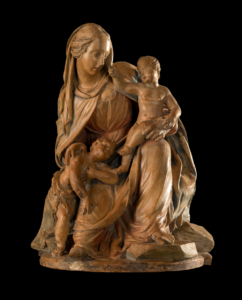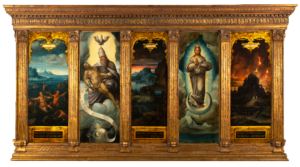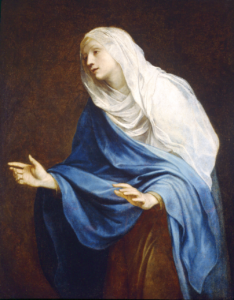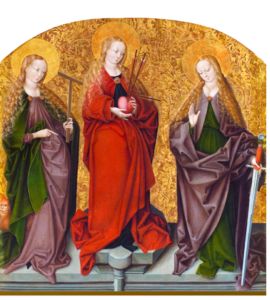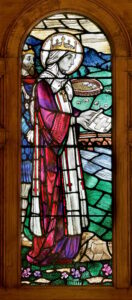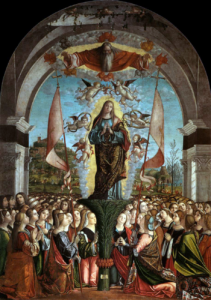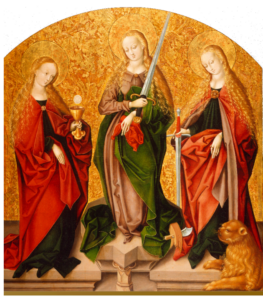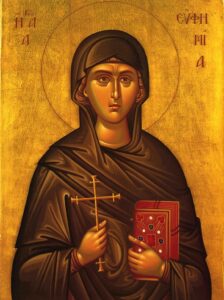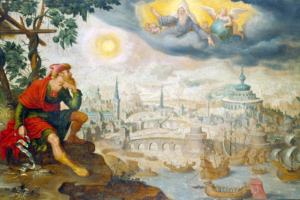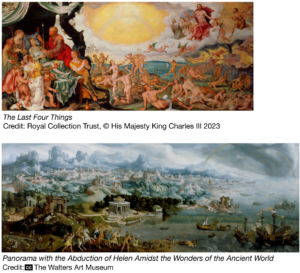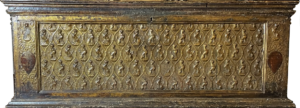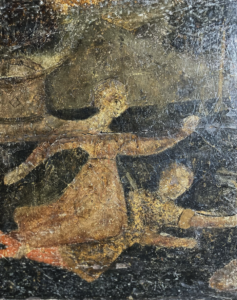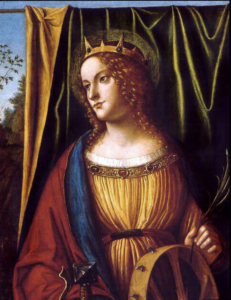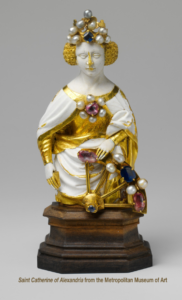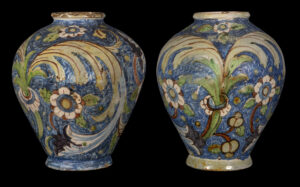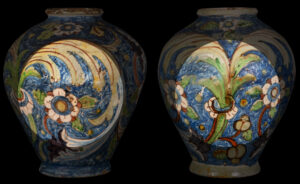Cabinet on Stand
Walnut
English, late 17th century
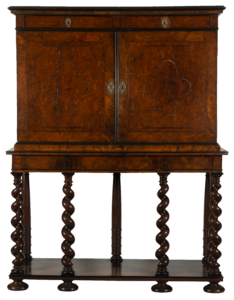
This William and Mary Cabinet on Stand came into the Museum & Gallery’s collection in 1970, through the generosity of a prominent Asheville physician, musician, author, and collector of art and antiques, Dr. Charles S. Norburn. Dr. Norburn served as a Navy surgeon in World War I, then in Navy hospitals in Philadelphia and Washington, D.C. He was even appointed by the U.S. Surgeon General to serve as personal surgeon to President Warren Harding on a trip to Alaska. After leaving the Navy, Norburn returned to North Carolina in 1923 and established the cutting-edge Norburn Hospital Clinic in 1928. The Norburn Hospital’s second building, with 32 acres of property, stood on what is now part of the Mission Health campus, leaving a lasting legacy of care in Western North Carolina. His donation to M&G has left a lasting cultural legacy in the western Carolinas, as well.
Much from the period of William and Mary (1689-1702), including the furniture characteristic of that era, reflects the religious atmosphere of the day. While it would oversimplify the case to say that religion was the sole explanation for the furniture fashion of the day, most sources do note the significant influence religion had upon it. Indeed, there would not have been a “William and Mary” period, had it not been for the “Glorious Revolution” of 1688, which deposed James II from the English throne and made him notable for being the last Roman Catholic monarch of England.
James II had succeeded his elder brother, Charles II in 1685, when Charles died without a legitimate heir. Early in his reign, Charles II had urged his younger brother to rear his daughters as Protestants, despite the fact that James and his wife were Catholic. Thus, when Charles II died, the throne passed to James II and established his elder daughter, Mary (b. 1662), as heir apparent. Mary had married her cousin, William of Orange, in 1677, when she was just 15, and moved to the Protestant Netherlands with her husband.
From the start, James II’s overt Catholicism alienated the majority in England. That dissatisfaction was amplified in 1688 with two crises—the birth of a son to James, (raising fears of a Roman Catholic dynasty), and very public conflicts with the king over religious tolerance.
Seven highly placed Englishmen (an Anglican bishop and six prominent politicians) wrote to William of Orange, inviting him to come set right the country’s grievances. William sailed to England in November of 1688 with a force of 20,000 men, making his way to London with very little opposition. James II fled to France in December of that year, and Parliament—now cemented as the ruling body in England—pronounced William III and Mary II joint rulers in April 1689.
The “William and Mary style” developed within this religious and cultural milieu. With them, William and Mary brought Dutch craftsmen to England, popularizing a style that had first been seen under Charles II (1660-1685) throughout England and its colonies. The finely inlaid cabinet style of this era had originated in France, but some of the most influential craftsmen were Huguenots. These weavers, painters, joiners and carvers fled to England from France in order to escape the religious persecution that arose after the revocation of the Edict of Nantes (1685). Their influence resulted in a more staid style than the flamboyance of Louis XIV’s court, while still exhibiting the highest craftsmanship and newest fabrication techniques.
The Museum & Gallery’s Cabinet on Stand evidences the traits distinctive to fine cabinetmaking in the William and Mary style. In place of the heavy, horizontal lines of domestic furniture, there was an emphasis on verticality, lifting cabinets on multiple, finely turned or barley-twisted legs. Indeed, the “high boy” and other specialized forms of domestic furniture owe their inception to William and Mary design.
Overall, there was a movement away from the excessive grandeur of the French court and the English Restoration period, but there was also intricacy and high design. Thin slices of highly figured woods (sometimes acacia, olive, or other exotic woods made possible by new East-West trade routes), ivory, and metal were affixed to flat surfaces like cabinet doors and sides, creating contrasting colors for geometric shapes, flowers, birds, and numerous other natural themes. Beneath these veneers, walnut superseded oak as the most frequently used wood species. Atop the veneers, surface treatments like lacquer and other fine polishes became vital to protect and highlight the designs.
In keeping with the above-mentioned traits of William and Mary cabinetmaking, M&G’s Cabinet on Stand features detailed walnut burl veneers and geometric maple inlay on three sides, over a yellow pine substrate. An overhanging cornice rests at the very top, with two drawers and two flush, side-hinged doors beneath. This top portion (the “cabinet” in the designation “cabinet-on-stand”) sits on a base containing two additional drawers and four sophisticated, tapering barley-twist front legs and three simpler turned rear legs. The barley-twist legs taper from being thinner at top and bottom to thick in the middle and demonstrate the cabinetmaker’s skill. A flat display platform sits at the very bottom, raised from the floor on turned bun feet.
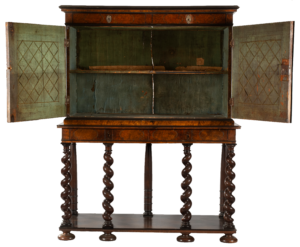 Our cabinet is likely from the late 17th century or early 18th century (perhaps 1700-1725) and illustrates the departure from the continental style toward a more staid English and/or Protestant sensibility. It is a presentation cabinet that served for storage in some prominent place of a household, possibly holding linens in the 17th-century equivalent of a dining room. The top and base are flat for display and may have held Dutch majolica, other pottery, or even items from the Orient over the years, depending on the wealth of the owner. This Cabinet on Stand is an important piece in the M&G collection for the history and artistry it brings to life.
Our cabinet is likely from the late 17th century or early 18th century (perhaps 1700-1725) and illustrates the departure from the continental style toward a more staid English and/or Protestant sensibility. It is a presentation cabinet that served for storage in some prominent place of a household, possibly holding linens in the 17th-century equivalent of a dining room. The top and base are flat for display and may have held Dutch majolica, other pottery, or even items from the Orient over the years, depending on the wealth of the owner. This Cabinet on Stand is an important piece in the M&G collection for the history and artistry it brings to life.
Dr. Stephen B. Jones, volunteer
Sources:
David L’eglise, Village Antiques at Biltmore, Asheville, NC
Joseph Aronson, The Encyclopedia of Furniture
Judith Miller, Furniture
Judith Miller, Miller’s Antiques Encyclopedia
Encyclopaedia Britannica
MetMuseum.org
Tim Forrest, The Bulfinch Anatomy of Antique Furniture
Kay West, “Daughter publishes book by pioneering physician father decades after his death”
